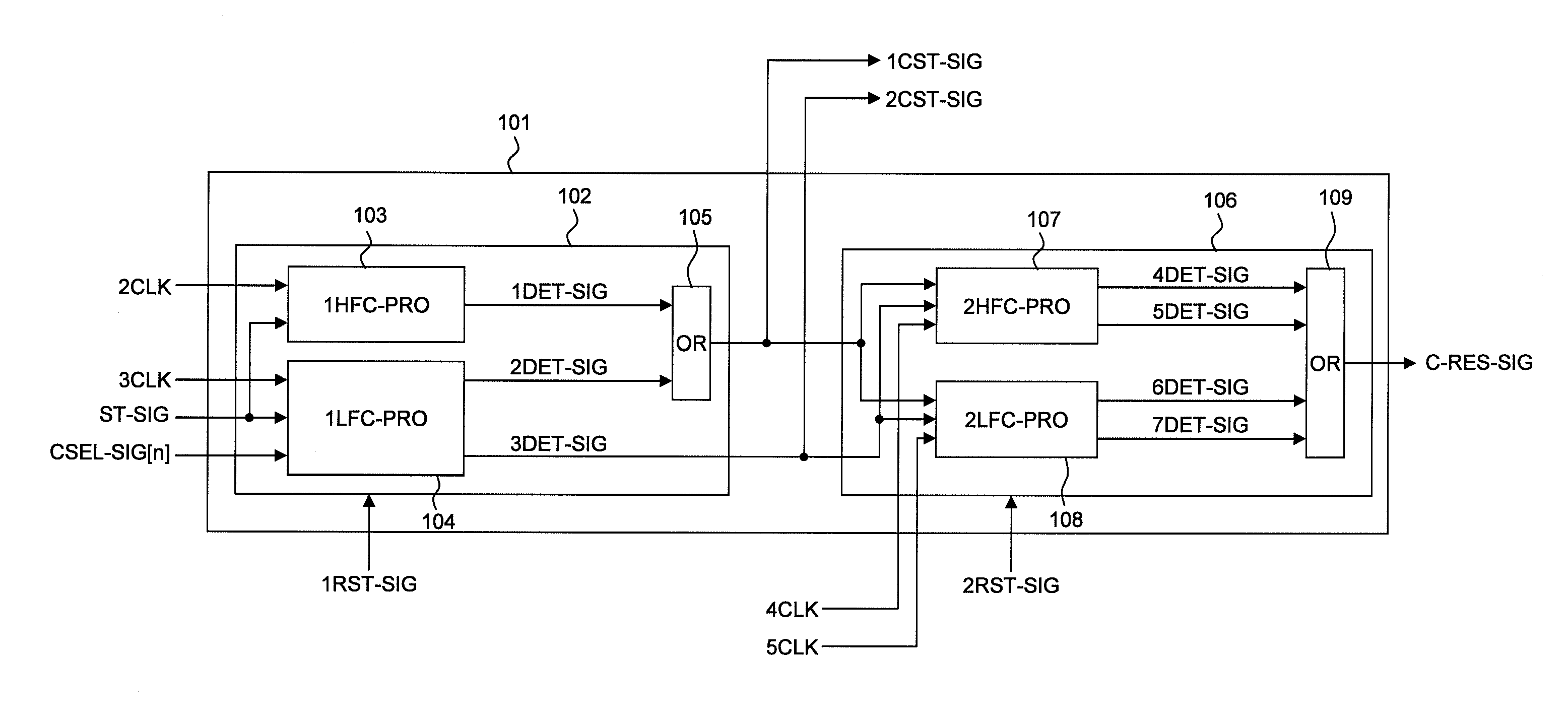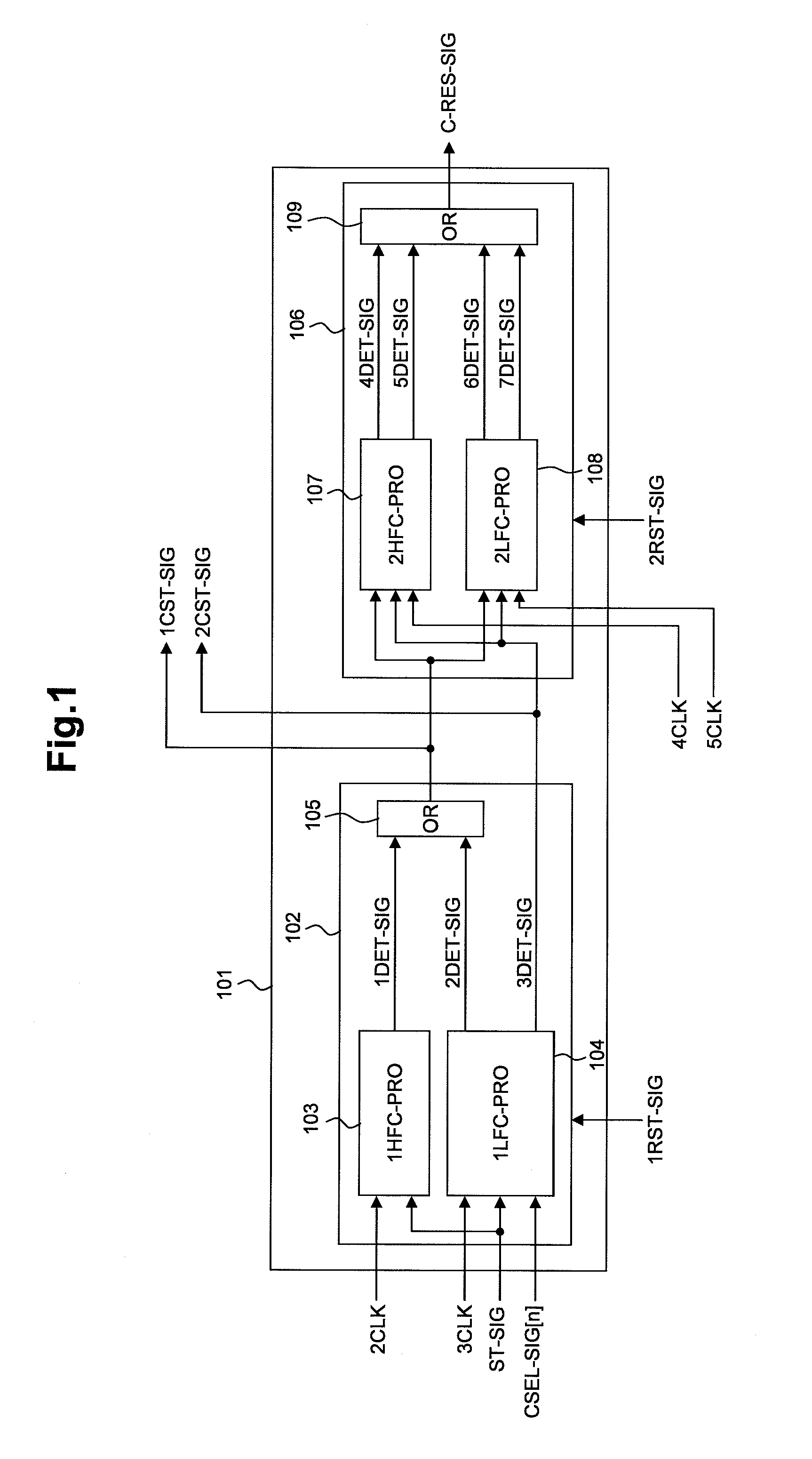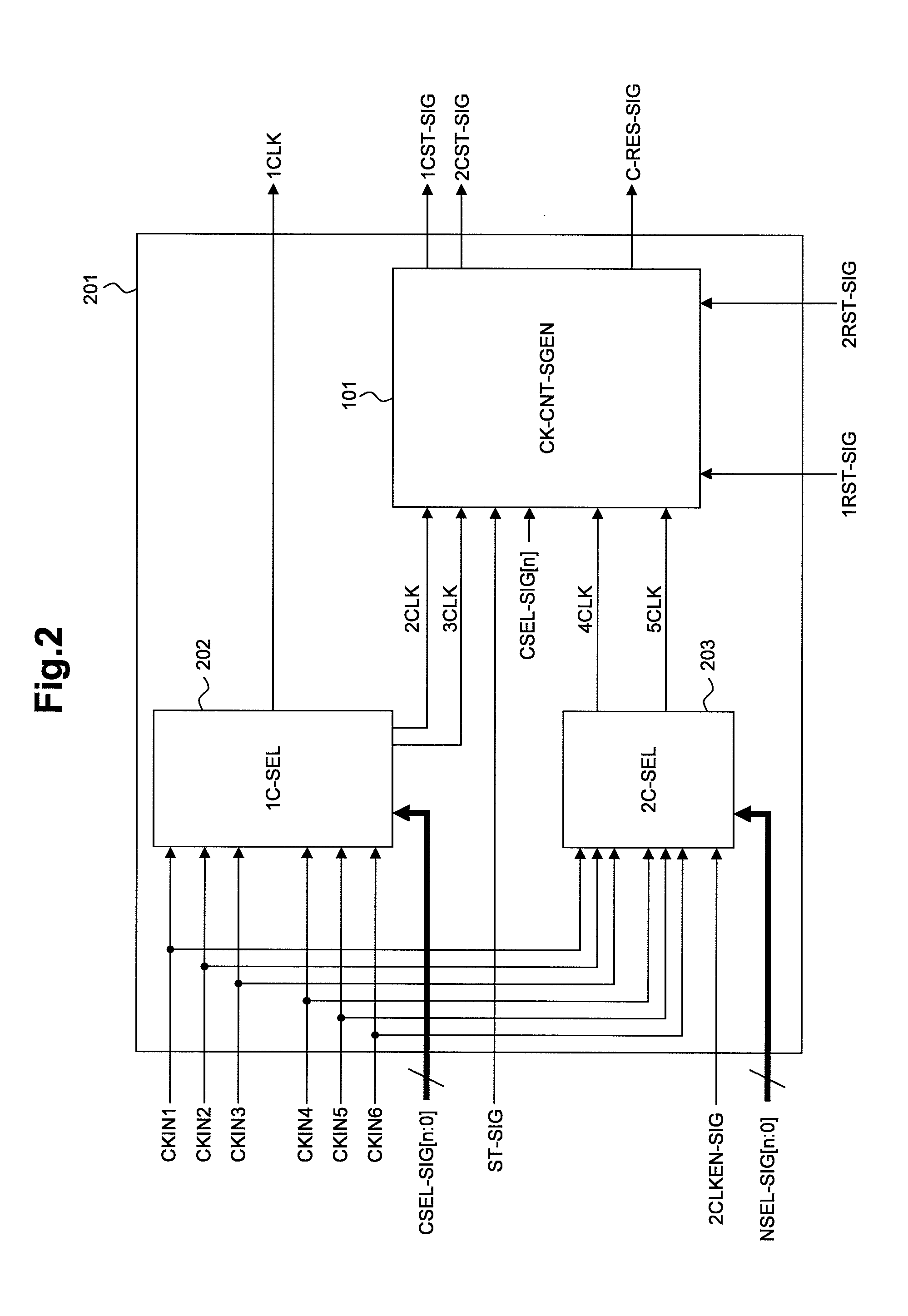Clock control signal generation circuit, clock selector, and data processing device
a clock selector and signal generation circuit technology, applied in the direction of generating/distributing signals, pulse techniques, instruments, etc., can solve the problems of obstructing factors, affecting the effect of power consumption reduction, and a great deal of time lost as standby tim
- Summary
- Abstract
- Description
- Claims
- Application Information
AI Technical Summary
Benefits of technology
Problems solved by technology
Method used
Image
Examples
first embodiment
[0096]FIG. 2 shows an example of the configuration of a modification of the clock-control-signal-generation circuit 101. The clock-control-signal-generation circuit shown in FIG. 2 has a first clock-select unit (1C-SEL) 202 and a second clock-select unit (2C-SEL) 203 in addition to the clock-control-signal-generation circuit (CK-CNT-SGEN) 101, which has been described in connection with the From this, the clock-control-signal-generation circuit shown in FIG. 2 shall be herein referred to as “select-type clock-control-signal-generation circuit 201”.
[0097]The select-type clock-control-signal-generation circuit 201 accepts inputs of: a plurality of clock signals, i.e. input clock signals CKIN1 to CKIN6; a current-select signal CSEL-SIG[n:0] of n+1 bits (n is a positive integer); a new-select signal NSEL-SIG[n:0] of n+1 bits; a switching-trigger signal ST-SIG; a second clock-select-unit-enable signal 2CLKEN-SIG; a first reset signal 1RST-SIG; and a second reset signal 2RST-SIG. The sel...
second embodiment
[0108]The clock selector 301 shown in FIG. 3 has: the select-type clock-control-signal-generation circuit (SCC-GEN) 201, which has been described in connection with the second embodiment; a gating control unit (G-CNT) 302; a clock-gating unit (C-GAT) 303; a first select-signal-holding unit (1SEL-ST) 304; a second select-signal-holding unit (2SEL-ST) 305; and a reset-signal-generation unit (REST-GEN) 306.
[0109]The clock selector 301 accepts inputs of: a plurality of clock signals (input clock signals CKIN1 to CKIN6); a clock-select signal of n+1 bits; a switching-trigger signal ST-SIG; and a second clock-select-unit-enable signal 2CLKEN-SIG. Also, the clock selector 301 outputs: an output clock signal CKOUT; a current-select signal CSEL-SIG[n:0] of n+1 bits; a switching-run signal SEL-RUN-SIG; and a second reset signal 2RST-SIG.
[0110]The clock-select signal of n+1 bits serves to indicate, to the clock selector 301, which of the input clock signals CKIN1 to CKIN6 to select and output....
third embodiment
[0113]The gating control unit 302 makes nonactive and outputs the first gating-control signal 1GAT-SIG on condition that the first clock-stop-permission signal 1CST-SIG is active, and the clock-resume-permission signal C-RES-SIG is nonactive. Also, the gating control unit 302 makes nonactive and outputs the second gating-control signal 2GAT-SIG on condition that the second clock-stop-permission signal 2CST-SIG is active, and the clock-resume-permission signal C-RES-SIG is nonactive. Now, it is noted that in the third embodiment, only one of the first gating-control signal 1GAT-SIG and the second gating-control signal 2GAT-SIG is made nonactive; the first and second gating-control signals are never rendered nonactive concurrently.
[0114]The clock-gating unit 303 outputs an output clock signal CKOUT with its logic level fixed at Low on condition that the first gating-control signal 1GAT-SIG is nonactive, whereas on condition that the second gating-control signal 2GAT-SIG is nonactive, ...
PUM
 Login to View More
Login to View More Abstract
Description
Claims
Application Information
 Login to View More
Login to View More - R&D
- Intellectual Property
- Life Sciences
- Materials
- Tech Scout
- Unparalleled Data Quality
- Higher Quality Content
- 60% Fewer Hallucinations
Browse by: Latest US Patents, China's latest patents, Technical Efficacy Thesaurus, Application Domain, Technology Topic, Popular Technical Reports.
© 2025 PatSnap. All rights reserved.Legal|Privacy policy|Modern Slavery Act Transparency Statement|Sitemap|About US| Contact US: help@patsnap.com



